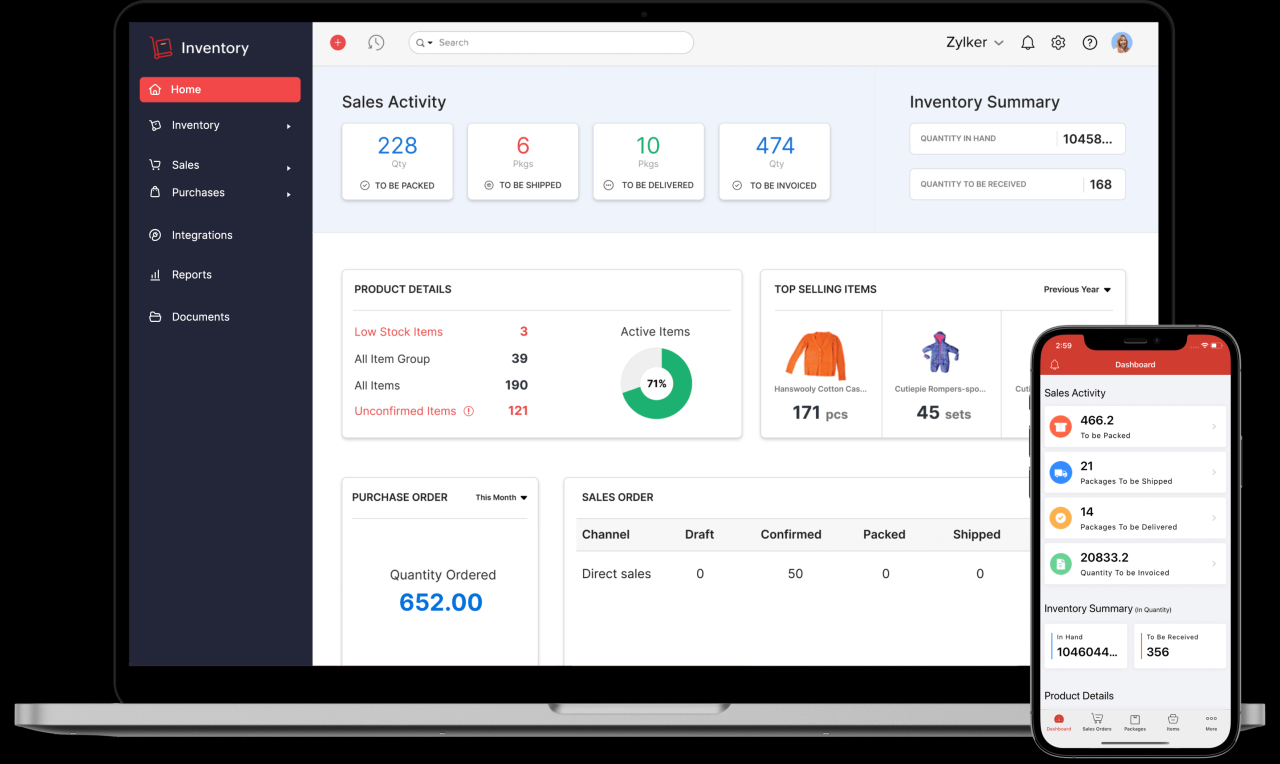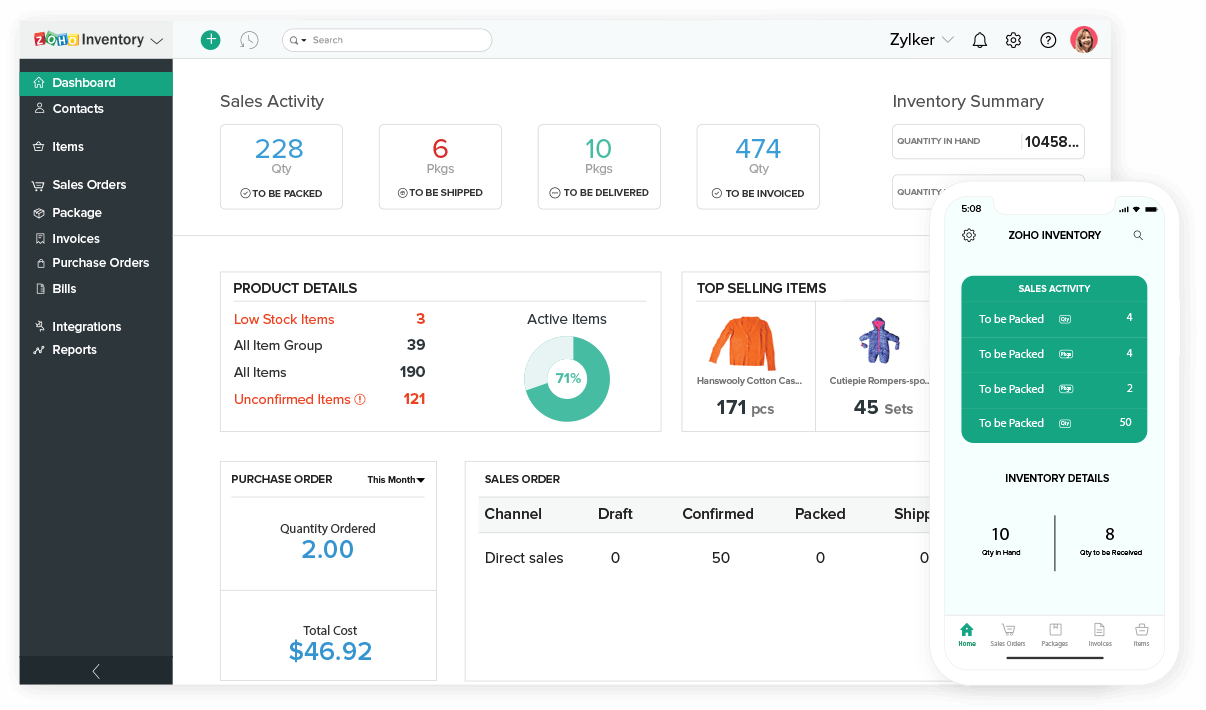
Revolutionizing Stock Control: The Indispensable Role of Online Business Inventory Management
In the dynamic landscape of modern commerce, where competition is fierce and customer expectations are constantly rising, efficient inventory management is no longer merely an operational task—it is a strategic imperative. For businesses of all sizes, from nascent startups to multinational corporations, the ability to accurately track, manage, and optimize stock levels can be the defining factor between success and stagnation. While traditional methods of inventory control have served their purpose for decades, the digital age has ushered in a transformative solution: Online Business Inventory Management. This cloud-based approach offers unparalleled visibility, automation, and scalability, fundamentally altering how companies handle their most critical assets.
This article will delve into the profound impact of online business inventory management, exploring its evolution, core benefits, essential features, implementation considerations, and a glimpse into its future.
The Evolution of Inventory Management: From Ledgers to the Cloud
For centuries, inventory management was a manual, painstaking process. Businesses relied on physical counts, ledger books, and spreadsheets to keep tabs on their stock. This analog approach was inherently prone to human error, time-consuming, and offered only a snapshot of inventory at a specific point in time. The advent of standalone software in the late 20th century brought some improvements, digitizing data and enabling more complex calculations, but these systems often remained siloed, requiring significant on-premise infrastructure and limiting real-time accessibility.
The true paradigm shift arrived with the widespread adoption of the internet and cloud computing. Online business inventory management systems emerged as a powerful alternative, leveraging the internet to store data remotely, provide real-time updates, and enable access from anywhere, at any time. This transition from static, localized data to dynamic, universally accessible information marked a monumental leap forward, particularly for businesses operating across multiple locations or engaging in e-commerce.
What is Online Business Inventory Management?
At its core, online business inventory management refers to the use of cloud-based software to track, organize, and manage a company’s stock of goods, materials, and products. Instead of installing software on individual computers or servers, businesses access the inventory system via a web browser or a dedicated application, with all data securely stored on remote servers maintained by the software provider.
This model provides a centralized, real-time view of inventory levels across all sales channels and storage locations—be it a physical storefront, a warehouse, an e-commerce platform, or even goods in transit. It automates many of the tasks traditionally performed manually, reducing errors, freeing up valuable staff time, and providing actionable insights that drive better business decisions.
The Transformative Benefits of Going Online
The advantages of adopting an online inventory management system are multifaceted and can significantly impact a business’s bottom line and operational efficiency.
-
Real-time Visibility and Accuracy: Perhaps the most compelling benefit is the ability to see exact stock levels across all locations in real-time. This eliminates the guesswork associated with manual systems, preventing embarrassing stockouts for popular items and avoiding overstocking of slow-moving goods. Accurate data means better sales forecasting and improved planning.
-
Enhanced Efficiency and Automation: Online systems automate a multitude of tasks, from tracking incoming shipments and updating stock levels to generating purchase orders when inventory hits a predetermined reorder point. This automation drastically reduces manual data entry, minimizes human error, and allows employees to focus on more strategic activities rather than tedious administrative work.
-
Significant Cost Reduction:
- Minimizing Overstocking: Carrying excess inventory ties up capital, incurs storage costs (warehousing, insurance, security), and increases the risk of obsolescence or damage. Online systems help businesses maintain optimal stock levels, reducing these carrying costs.
- Preventing Stockouts: Lost sales due to stockouts are a direct hit to revenue and can damage customer loyalty. Real-time data ensures businesses can replenish popular items before they run out.
- Reduced Waste and Shrinkage: Better tracking helps identify discrepancies, reduce spoilage for perishable goods, and deter theft, leading to less inventory shrinkage.
-
Improved Decision-Making through Data Analytics: Online inventory systems collect vast amounts of data, which can then be analyzed to identify trends, popular products, seasonal demands, and supplier performance. Comprehensive reporting tools provide insights into inventory turnover rates, profit margins per product, and customer purchasing patterns, empowering businesses to make data-driven decisions regarding purchasing, pricing, and marketing strategies.
-
Scalability and Flexibility: Cloud-based solutions are inherently scalable. As a business grows, its inventory system can easily accommodate increased stock volume, additional locations, and more users without requiring significant hardware upgrades or complex IT infrastructure changes. Furthermore, the accessibility from any internet-connected device offers unparalleled flexibility for remote work or managing inventory on the go.
-
Seamless Multi-Channel Integration: For businesses selling across multiple channels—e-commerce websites, brick-and-mortar stores, marketplaces like Amazon or eBay, and wholesale operations—online inventory management systems are invaluable. They centralize inventory data from all these sources, ensuring that stock levels are consistent across the board, preventing overselling, and streamlining order fulfillment.
-
Enhanced Customer Satisfaction: By preventing stockouts and enabling faster, more accurate order fulfillment, online inventory systems directly contribute to a better customer experience. Customers receive their orders promptly and reliably, leading to increased loyalty and positive reviews.
Essential Features of a Robust Online Inventory System
While specific features may vary between providers, a comprehensive online inventory management system typically includes:
- Stock Tracking and Control: The ability to track individual SKUs (Stock Keeping Units), lot numbers, or serial numbers, along with their location, status (e.g., available, reserved, damaged), and movement history.
- Automated Reordering: Setting minimum stock levels and automatically generating purchase orders when inventory falls below these thresholds, often with options for preferred suppliers and pricing.
- Barcode Scanning and RFID Integration: Using scanners to quickly and accurately update inventory counts during receiving, picking, and shipping, significantly reducing manual errors.
- Reporting and Analytics: Customizable reports on inventory turnover, sales performance, cost of goods sold, vendor performance, and forecasting tools to predict future demand.
- Multi-Location Management: Managing inventory across multiple warehouses, retail stores, or distribution centers from a single dashboard.
- Integration Capabilities: Seamless integration with other critical business software, such as Point-of-Sale (POS) systems, e-commerce platforms (Shopify, WooCommerce), accounting software (QuickBooks, Xero), and shipping carriers.
- Supplier Management: Tracking supplier information, purchase order history, lead times, and payment terms.
- User Access and Permissions: Granting different levels of access to various employees based on their roles and responsibilities.
- Mobile Accessibility: Accessing and managing inventory data via smartphone or tablet applications, enabling on-the-go operations.
Implementing an Online Inventory System: Key Considerations
Transitioning to an online inventory system requires careful planning and execution. Businesses should consider:
- Assessing Current Needs: Clearly define existing pain points, current inventory volume, number of SKUs, sales channels, and future growth projections.
- Vendor Selection: Research various providers, comparing features, pricing models (subscription-based), scalability, customer support, and integration capabilities with existing systems. Request demos and read reviews.
- Data Migration: Plan for the careful transfer of existing inventory data into the new system. This can be a complex process and may require data cleansing.
- Training and Adoption: Ensure all relevant staff members are adequately trained on how to use the new system. User adoption is crucial for success.
- Phased Rollout: Consider a phased implementation, perhaps starting with a smaller subset of inventory or a single location, before rolling out company-wide.
- Security: Verify that the chosen provider offers robust data security measures, including encryption, regular backups, and compliance with relevant data protection regulations.
The Future of Online Inventory Management
The trajectory of online inventory management is towards even greater automation, intelligence, and interconnectedness. Emerging technologies are poised to enhance its capabilities:
- Artificial Intelligence (AI) and Machine Learning (ML): Will further refine demand forecasting, identify optimal reorder points, predict potential supply chain disruptions, and automate pricing strategies.
- Internet of Things (IoT): Smart shelves and sensors can automatically detect stock levels, trigger reorders, and monitor environmental conditions (e.g., temperature for perishables), reducing manual intervention even further.
- Blockchain Technology: Offers enhanced transparency and traceability across complex supply chains, verifying the authenticity and origin of products.
- Robotics and Drones: In larger warehouses, autonomous robots are already assisting with picking, packing, and even inventory counts, seamlessly integrating with online management systems.
Conclusion
Online business inventory management is no longer a luxury but a fundamental requirement for businesses aiming to thrive in the modern economic landscape. It empowers companies with real-time insights, automates laborious tasks, significantly reduces operational costs, and ultimately enhances customer satisfaction. By embracing these cloud-based solutions, businesses can transform their stock control from a reactive chore into a proactive, strategic advantage, ensuring they are always ready to meet demand, optimize their resources, and navigate the complexities of a rapidly evolving market. The future of commerce is digital, and at its heart lies intelligent, online inventory management.

